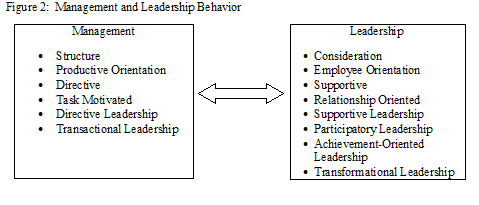| << Chapter < Page | Chapter >> Page > |

As popular as the Hersey/Blanchard theory is, little research has been completed giving evidence that applying the theory really does improve performance. Critics argue that the model does not adequately address “developmental levels” of subordinates. In addition, situational leadership theory does not fully address one-to-one versus group leadership in an organizational setting (Northouse, 2004, pp. 62-63).
About a decade after Hersey and Blanchard presented the situational leadership theory, contingency leadership theory surfaced. This theory is also related to what the literature refers to as “leader-match theory” (Fiedler&Chemers, 1984, p. 23), where leaders are matched to different situations. So, we are basically talking about a match between a leader’s style and various situations.
Fiedler suggests that a leader’s style is either task motivated or relationship motivated. Task-motivated leaders deal mostly with goal setting and accomplishment, while relationship-motivated leaders concentrate more on closer interpersonal relationships with employees. These styles fit nicely into Figure 2 and are geared toward management and leadership behaviors.

Fiedler was the first to specifically categorize situational variables: (1) leader-member relationships, (2) task structure, and (3) position power. Leader-member relations involve the confidence and loyalty workers have for their leader. Leaders with appropriate task structure are very clear and specific when relating goals and objectives to members of the organization. Position power is simply the amount of authority a leader has in making decisions.
In the early 1970s, House and Dressler (House, 1971; House&Dressler, 1974) popularized the path-goal theory. This theory focuses on what motivates members of the organization to perform well, and whether or not they feel appropriately rewarded for their work. So the challenge for the leader is to implement a leadership style that best meets the motivational needs of the worker.
House and Dressler suggest that effect leadership requires making the “path to the goal” clear to all in the organization, and involves (a) appropriate coaching, (b) removal of the obstacles that make reaching the goal difficult, and (c) making work satisfying to all. Within the path-goal theory are four distinct styles of leadership: (1) directive leadership, (2) supportive leadership, (3) participatory leadership, and (4) achievement-oriented leadership. We could easily add the components of the path-goal theory to our Figure 2.
Transformational leadership theory surfaced quite recently and is credited to the work of James MacGregor Burns (1978). Burns presents two types of leadership: transactional and transformational. He perceives most of the models presented so far in this chapter to be transactional, in that they focus on what happens between leaders and their followers. Principals and superintendents who offer bonuses to teachers who successfully raise student test scores exhibit transactional leadership. Teachers who routinely give students a grade for work completed are practicing transactional leadership. In both of these examples, the “exchange” between the leader and follower is quite simple: You do this, and I will give you that.

Notification Switch
Would you like to follow the 'Ncpea handbook of online instruction and programs in education leadership' conversation and receive update notifications?